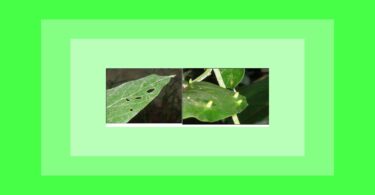Radko Tichavsky is now offering a one semester virtual course in Holohomeopathy (in English). You can learn how to define and analyze holons and how to repertorize the specific homeopathic treatment beyond just disease or pest names. You can find out more here: www.icomenius.edu.mx
NEW BOOK:
Organon de la Holohomeopatía
Six years in the making, it is the latest book by Radko Tichavsky, researcher on the application of homeopathy in agriculture. This Spanish language book covers homeopathic interventions in agriculture from the holistic view, allowing greater certainty in repertorizations. It addresses a novel concept of metabolic similarity, not only among plants, but also among different species of the animal and plant kingdom. It studies the formation and dynamics of attractors, areas of greater vitality within the holons and coexistence units of different living organisms. Holohomeopathy is a fascinating contribution to the application of homeopathy to plants. It allows one to discover a universe of surprising relations in vital dynamism. It puts into the hands of the agricultural producer a valuable tool for the successful handling of pests and diseases in crops of any size. For ordering or information: [email protected]
Dear Radko,
I live in in the SW of England. We have chronic diseases affecting the Horse Chestnut trees (Aesculus hippocastanum ). I have done a little research – although I am not an expert! It seems we have 3 different diseases currently. Leaf blotch: caused by the fungus Phyllosticta paviae. Leaf mining moth: caused by the caterpillar laying moth Cameraria ohridella .Bleeding canke : caused by a bacteria Pseudomonas syringae pv aesculi.
Would you be kind enough to suggest a possible remedy for each that I could trial and report back to you.
Many thanks
James GF
Radko Tichavsky:
Dear James,
Thank you for this stimulating question that is apparently divided into three parts, but in reality, is only one. I’m going to expand a little more on the explanation this time because it reflects not only the problems of Horse Chestnut trees, but many other crops today.
In nature there is really not what allopathic science calls and points out as individual pathogens. All living organisms, whether microorganisms or macrorganisms, collaborate in an intricate network of clusters. When Hahnemann spoke about the need to gather in the repertorization the totality of symptoms to determine the remedy called the simillimum, many thought that it was only about a type of ideal state, desired but not necessarily achieved.
In fact, when we repertorize a holon, we return to Hahnemann’s old maxim regarding the search for a simillimum, since the repertorization includes the maximum number of participating organisms possible, and each one of them bioindicates one or several symptoms. Each holon contains within itself the bioindicators that are at the same time the necessary remedies to solve the vital imbalances.
We will start with the gram-negative bacterium Pseudomonas syringae pv aesculi which has a great virulence because it can replicate more than 70 times a day and exchanges genetic material with the tree (it has 5 metabolic routes to do so) but also does so with vector insects such as for example the caterpillar laying moth Cameraria ohridella, which you mention. Most gram-negative bacteria, and P. syringae pv aesculi is an example, are polymorphic and very resistant.
In addition, this bacterium can cause a high sensitivity of the trees to the nucleation of ice. Some Horse Chestnut trees are frozen at really moderate temperatures such as -1.8 degrees of Celsius, and the lesions produced are used by pathogenic fungi as entry points.
The fungus Phyllosticta paviae which is mentioned in second place in your question, also forms a community interconnected with some bacteria, but especially with other fungi: Phyllosticta sphaeropsoidea, Phomopsis carposchiza, Colletotrichum gloeosporioides, Asteromella aesculicola, Trichothecium roseum, Alternaria alternata, Cladosporium cladosporioides, Epicoccum nigrum, Phoma sp, Chaetomium sp., Diaporthe padi and Trichoderma polysporum. All of them collaborate with each other, and only some compete.
The fungi in turn emit signals in the form of volatile organic compounds (VOCs) that are expressed in nature in the form of subtle odors imperceptible to humans, but very prized by parasitic insects, for example by the caterpillar laying moth Cameraria ohridella that you mention.
Some pathogenic fungi such as the Guignardia aesculiand the mildew Erysiphe flexuosa interact through the VOC with the Camearia ohridella that detects them and oviposite less in the trees infected with these fungi.
Other fungi attract their parasitoid insects, the most common being Minotetrastichus frontalis, wasps of the genera Chrysocharis and Pnigali, succeeding only if the holon is well integrated and biodiverse, but this in the urban environment hardly ever happens.
In most of the parks where the Horse Chestnut trees are found in Great Britain and other countries such as Holland, the trees are grouped together in the form of monoculture patches surrounded by grasses, with nothing else around. The Horse Chestnut tree was introduced to Europe from the Balkan Peninsula in the 17th century, and has had relatively little time for adaptation in England. In the Balkans, Horse Chestnut trees coexist naturally with other species of trees e.g. Tilia sp, Carpinus sp. Ulmus sp. Pinus spp., Platanus sp., Juglands sp., Ostrya sp., Fraxinus sp., and with plants such as Anemone ranunculoides, Corydalis sp., Aremonia agrimonoides, Symphytum tuberosum, Viola sp. Fagus sylvatica etc. Each one of these plants or trees attracts and cultivates in its sap and in its roots, leaves, flowers and fruits a great number of insects and microorganisms that together form a network of vital resilience called holon.
Separating the Horse Chestnut trees from their original community and placing them in the form of monoculture in the parks of cities contaminated with emissions of heavy metals, SOx NOx, with the presence of ground-level ozone that produces primary lesions (a kind of burn) opens the entrance to secondary infections of bacteria and fungi pathogens.
Adding to this panorama the climatic changes and the increase in temperature produces a systemic disease (comparable to human AIDS) that weakens trees and predisposes them to new diseases and pests.
Each of the organisms I have mentioned (plant, trees and the micro and macro living organisms associated with Horse Chestnut trees in their native environment) are remedies to cure Horse Chestnut trees.
It is clear that in holohomeopathy there is no such thing as a fixed pathogen-remedy type correspondence. This is a gross simplification, which never leads to stable and lasting results.
To obtain an accurate and stable result it is necessary to do a conscious repertorization of the symptoms of each holon to determine the exact remedy that has simillimum characteristics, that is to say, it include all the symptoms of the holon.
In general it can be said that the following remedies can help, since they predispose the trees and the holon as a whole to develop an Acquired Systemic Resistance (SAR): Acidum salycicum , Kalium phosphoricum, Silicea phosphorica in potency 12 CH, together with vitamin B1 complex supplementation in ponderal doses.
Another of the applied homeopathic solutions is called polyploidia induction, for which we use Colchicum autumnale in low potency, for example 3 CH, or even in low decimal potency. This remedy interrupts the process of mitosis in the tree, and makes the tree (but also its endogenous microorganisms) replicate exact copies of the chromosomes repeatedly. The effect on trees is that they increase their ability to harbour a greater biodiversity of bacteria and endophytic fungi, and these at the same time lose their virulence in this process. (example of Pseudomonas syringae pv aesculi)
That is to say, the bacterium will be present in the tree, but in asymptomatic form, since its virulence and pathogenicity will be balanced and controlled by the other endogenous microorganisms.
James, I hope that I can receive the message without being frightened with the complexity of interactions in the holon, but this is the reality to which you have to stick to find apparently simple solutions such as the control of one fungus, an insect and one bacterium in Horse Chestnut trees.
Hello Radko,
I live in Lancaster, Pa (USA) Mailing code: 17540. Moderate climate and rainfall. This is a Redbud Tree that is losing its bark. My area has a problem with the spotted lantern moth, although I have not seen that many in my yard. It may be due to some other cause. Is there something I can do to save it? I was thinking of wrapping the tree in plant wrap to try and stop the bark from peeling. We have two other Redbud Trees where the problem is just beginning.
Redbud tree bark
Redbud tree
Thank you,
Janice
Radko Tichavsky:
Dear Janice,
The Red bud Cercis canadensis Redwood trees typically lose part of their bark, which is completely normal and does not indicate disease or a low tree vitality. Scaling of the bark is a feature of the tree. Some species of the Fabaceae family are attacked by spotted lanternfly (Lycoma delicatula) and although there are as yet no reports of attacks on Cercis canadensis, this possibility exists. It is necessary to take care of the appearance of withering of the leaves and small sores in the branches and in the trunk that could indicate dieback/canker (Botryosphaeria sp. ) with visible lesions on the surface of the branches or as dark sunken areas with black centers. In this case you could apply preventively Ginkgo biloba 6 CH that helps to control both the insects (spotted lanternfly) and the possible attack of the fungus (Botryosphaeria sp.).
Greetings Radko,
I tried my hand at growing cucumbers this summer. Lots of them grew, but then one day I came out and discovered squash bugs all over them (below). Is there a non-toxic to get rid of them? Also, is it safe to eat these cucumbers once they’ve been washed? The crops next to it were tomatoes and string beans, which weren’t affected. I live in Erwin Tennessee, (U.S.) Mailing code 37650. In the planting season the temperatures range from 65- 84 degrees F. We get 44 inches of rain per year.
Thank you!
Maurice
Radko Tichavsky:
Hello Maurice,
Although the insects are not seen with much definition in the photograph, most likely it is Anasa tristis, a pest difficult to manage. The good news is that although the saliva of this insect is toxic to plants, it is not at all for humans. The only drawback is that when bed bugs are disturbed, they expel a disgusting odor. They also transmit cucurbit yellow vine disease (CYVD) and other bacterial diseases in cucumbers. The first strategy is to make traps in the form of wooden boards or cardboard paper placed on the ground with a little pepper and a cucumber leaf mixed with water in a mixer and sprinkled under the traps. The pepper contains pheromone that attracts adults, after this in the morning you can discover the traps and eliminate the insects mechanically. The second strategy is to spray cucumber crops with kaolin dust as a mechanical control, as kaolin interferes with the insect’s respiratory process. As far as the homeopathic remedies are concerned, it is useful to use a bionosode elaborated from eggs to 6 CH potency, spraying it in early spring. And if enhenen nymphas are already present, Azadirachta indica 6 CH can be used with Ricinus communis oil as an adjuvant.
It is useful to intercalate cucumber crops with radish, or purple onion crops as the radish and purple onion roots reproduce Bauveria bassiana, an entomopathogenic fungus that kills insect eggs and nymphas, including adults.
Dear plant doctor,
My flowering plants have been affected by large and small snails. They eat up all the flowers. I live in Newark, New Jersey (Northeastern U.S. – Mailing code 07104) Moderate weather.
Thank you
Josephine Sunderaj
Radko Tichavsky:
Dear Josephine, in order to be able to answer you with greater precision, I would need to know the type of snails and the species of plants affected. In my August 2018 column you can find general advice on the remedies we use to control snails. They are bioindicators of the presence of heavy metals in soil and plants. So the priority in principle should not be to eliminate them but to decrease the toxicity levels of the heavy elements (V, Mo, Ni, Se, Ti, Rb, Sr and Ba) in the soil. Fertilizers of chemical origin are often the main sources of heavy metals in orchards in addition to environmental pollutants produced by humans and transmitted in water or air.
Applications of Aloe vera 6 CH and Opuntia ficus indica 6 CH can help chelate heavy metals in the soil, and once the toxicity is resolved the snails disappear. Any other application of homeopathic remedies such as Helix tosta mentioned repeatedly in books on agrohomeopathy (a homeopathic preparation made from the lastura of the burned snail) results only in palliation, a temporary suppression of symptoms, and problem returns over and over again.
An Italian publisher has just made available copies of Radko Tichavsky’s latest book in Italian:
Also available on Amazon.com
https://www.amazon.it/Fondamenti-agro-omeopatia-Radko-Tichavsk%C3%BD/dp/887676724X









